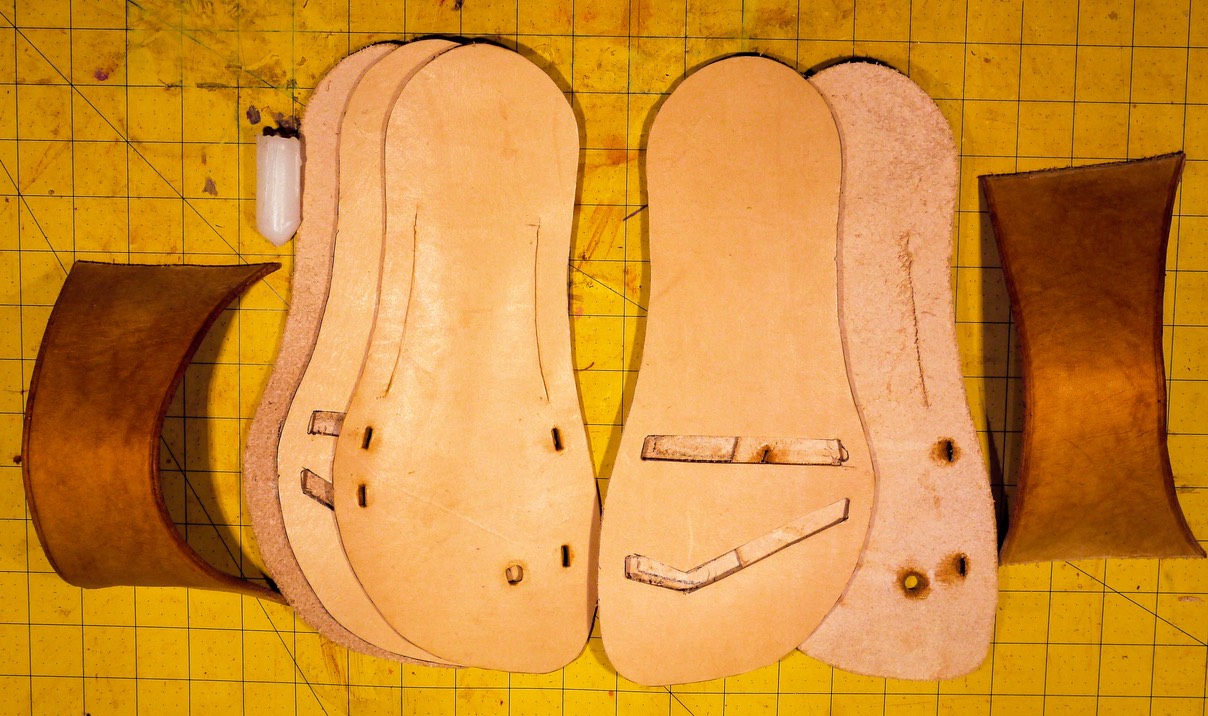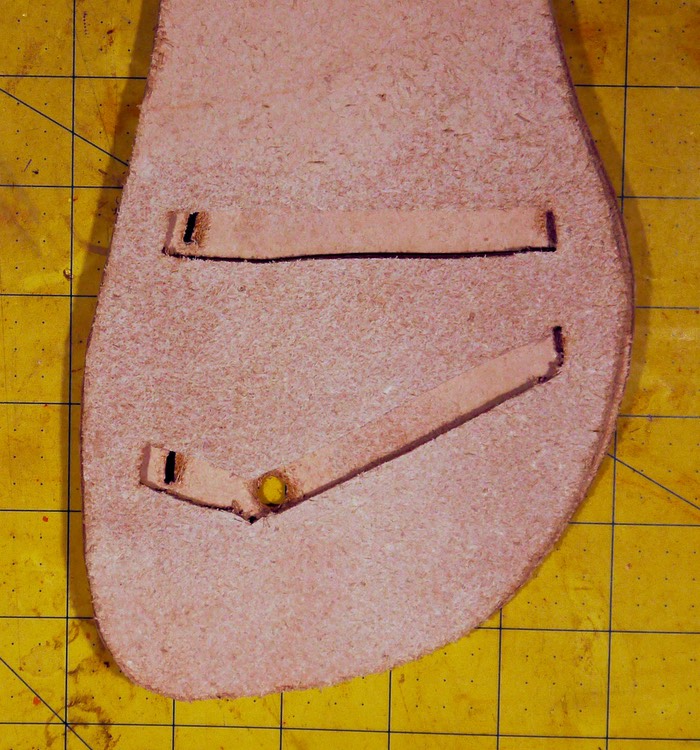On March of 2020 a website visitor wrote:
"The LOTR is a combo of fixed and continuous straps and what boggles my mind is how, if it matters, to hide the thickness of the straps under your foot. I've always imagined either skiving the ends of the straps or cutting out little recesses for them to sit flush in. Is this necessary or even possible with continuous straps?” Annie P
I like to think my original LOTR design from 1966 is evolving - the slim strap you write about is narrower and thinner than I used in early days. But in the test pair above and here you can get an idea of how the strap looks under the toes in the front and under the meaty forward (the "ball") part of the foot just behind it when it rides in a cut-out track. In my standard design the vegetable-tanned cowhide compresses under the toes and on both sides of the forward strap. There are examples of a broken-in pair half-way down this page. Look for a very slight ridge which is produced under the toes. Customers tell me that it gives their toes something to hold on to, but I don't personally feel either the low nor the high spots.
Behind it, the strap layout fortuitously continues under a part of the foot that isn't particularly sensitive, and I never feel it at all, except perhaps when I'm first breaking-in a new pair. Ditto for the front parts: I’m not aware of the straps at all after a few wearings.
Now that I make the long strap thinner and not as wide, it is even less detectable.
You may be interested to know that my most recent pair I've made for myself (above photos) uses some features that may or may not work their way into a final design. I continue to test them and assess the different approaches in the hope of improving my standard 50-year-old LOTR design.

Note that they are TWO layers of 7/8 or 8/9 oz bridle cowhide cemented to my standard 11/12 oz sole cowhide. The third layer necessarily covers and protects the saddle-stitching of the uppers. And I chose from the loose section of the hide for the top two layers, just to put to the test my theory all these years that it makes a difference. It doesn't. In fact, the looser fibres of side or belly leather compress more than the more firm upper-side and shoulder leather that I have always used, so it is a cushier walk.

I cut channels in that mid-layer for the straps and used paraffin to make them slicker. As you can see if you viewed my tutorial I recommend using paraffin for those tracks and dubbin in the chamfered slots the straps pass through, to make adjusting them work more smoothly for the life of the sandals. I wanted to see if tracks cut all the way through that middle layer would make a difference, and it does slightly, but it is more prep-work, and requires adding that extra layer, more than is necessary.
I also tried a more fitted & broadly-tapered arch strap, but the additional snugness of the fit is also probably unnecessary, as well as being very difficult for my final wet-fitting. If you try building your own pair, enlist a helper for the fitting.
The extra width allowed me to punch 4 slots on each side of the arch strap for the slim strap instead of 2, probably a good upgrade with a wider arch strap, but because it is wider where it meets the insole at the bottom, it is harder to slip the foot in and out without undoing the sheet bend knot, which I don't ever have to do on my traditional design.
Lastly, the broad straps were cut from a looser section of the hide, and that makes for easier wet-fitting and breaking-in, but they will likely end up stretching more. That should be compensated for by the added width, but I'll have to wear them a few more years to determine which of the features is worth incorporating in my ongoing LOTRs design.
"I've read in the Make it Yourself shoe book to smoosh in a layer of 1" foam between the top and midsole but I don't like the idea of some nasty foam in a lovely handcrafted sandal. What is your experience with feeling the straps under your feet? Do you even notice them? Thanks again for all the great info on your website! What a kind resource to give the world! Hope you are well and to hear from you soon!” Annie P
Foam layer: I'd say forget it, and I have tried all kinds of liner materials. Foam will break down in the compressed area, leaving the uncompressed foam thicker, so in time the insole acquires more of the shape of the foot bottom. But that will mean that more gravel, dirt and debris will get stuck between foot and insole, and the sandals will keep your feet warmer because the sole has more surface area in contact with the skin. I prefer the loose fit underfoot, so that air can circulate freely and keep the foot cool in warm, sandal-weather. I’ve made some special orders with a small triangle of clipped fleece under the ball of the foot, as a test. I’m waiting for feedback.
I recently made a few pair with clipped natural wool fleece in the heels, flesh-side-down, and that is one material that retains its loft. I Barge it in place on the mid-sole and then trim it down to the skin toward the edges in order to cement the insole more closely to the mid-sole. However, I don't think that I'll make my next pair using it.
These are subtle design-tweaks and of limited interest to the rest of the world, so I'm glad for the opportunity to go on about it, especially if it will help you in your sandal career.
Have you made any sandals yet? Let's see what you have made.
Davy Joel Rippner
Leathersmithe